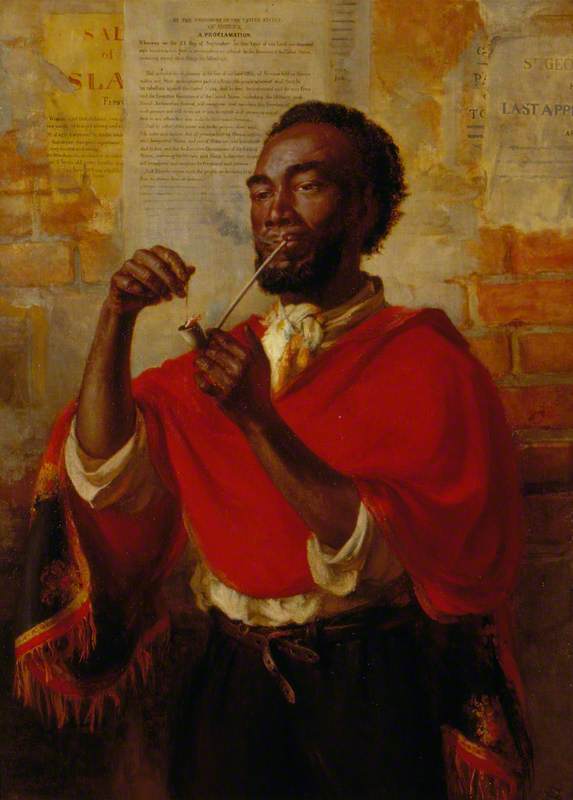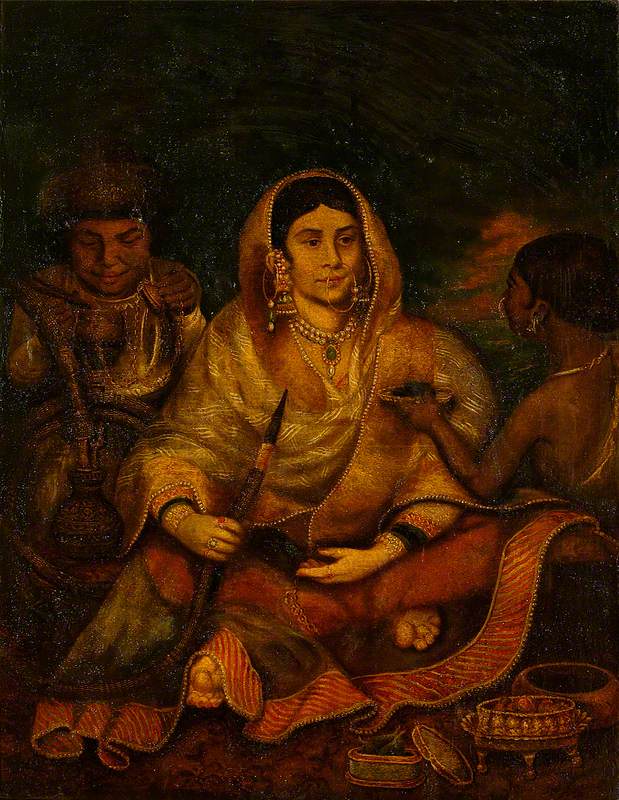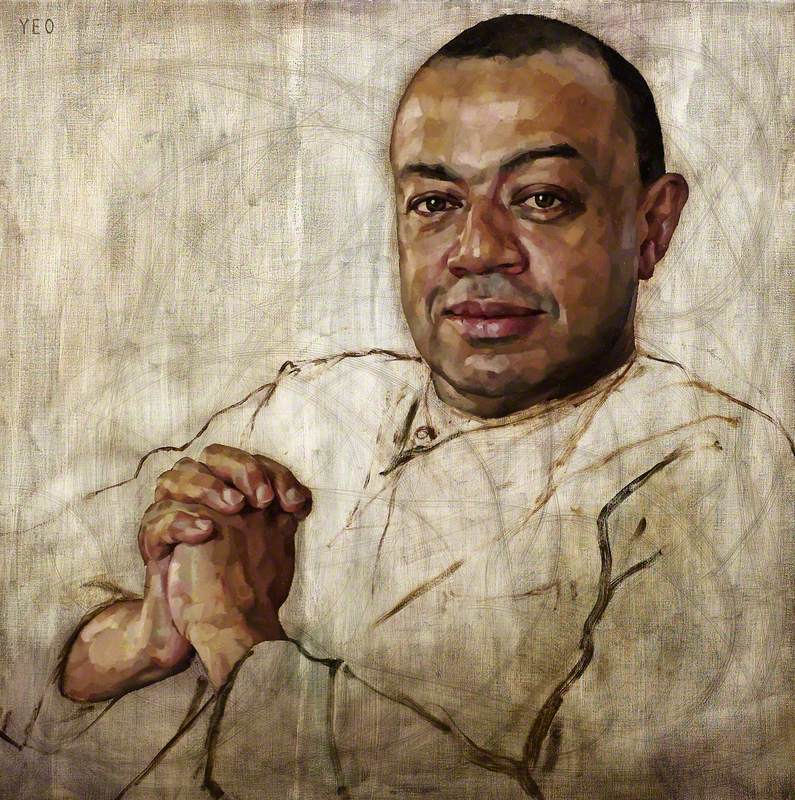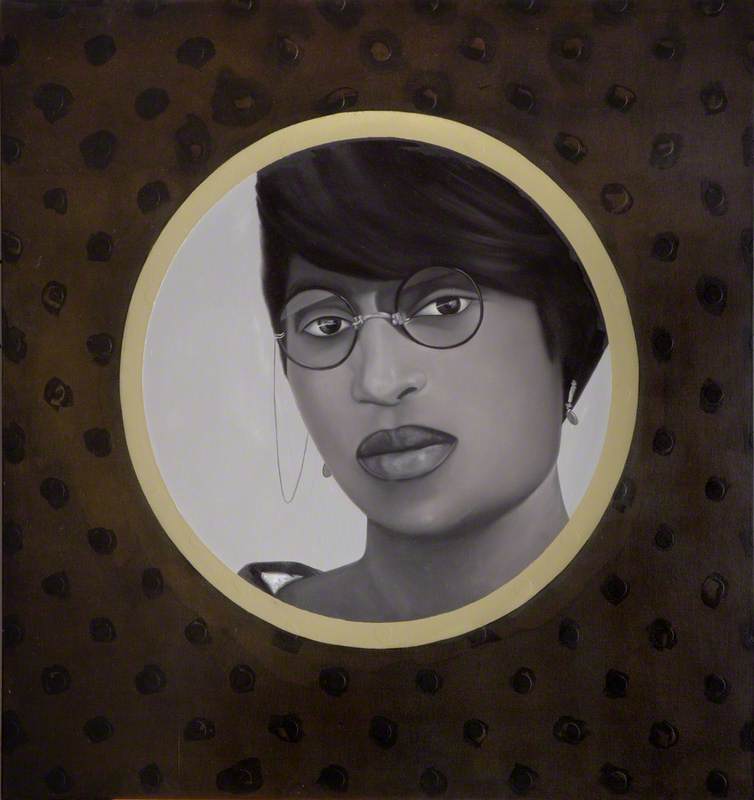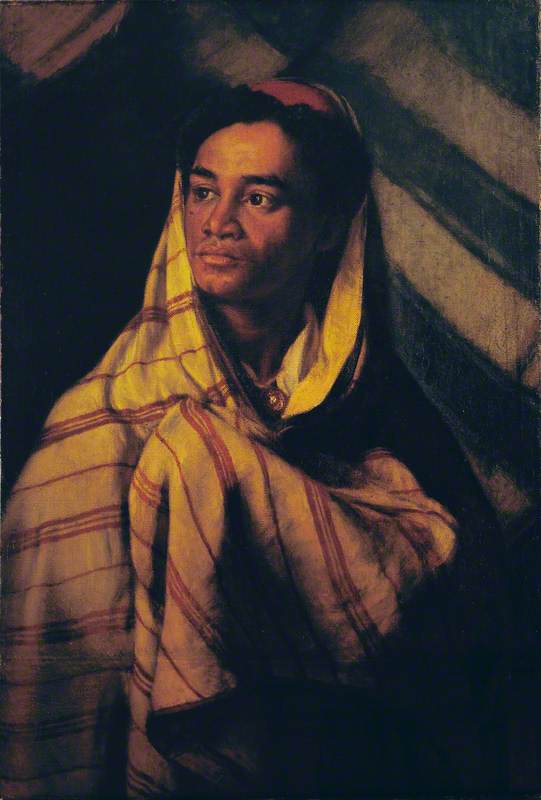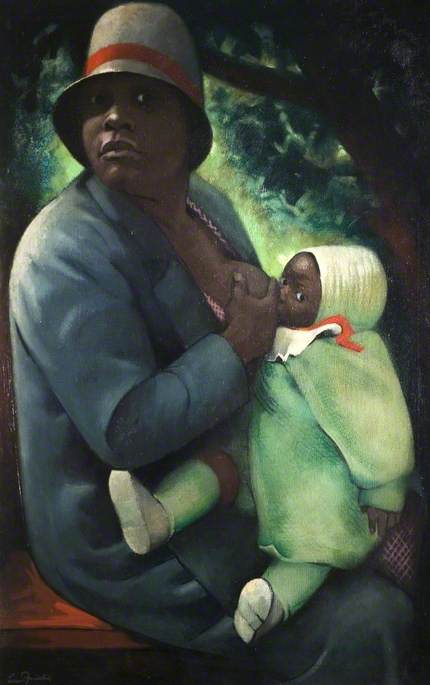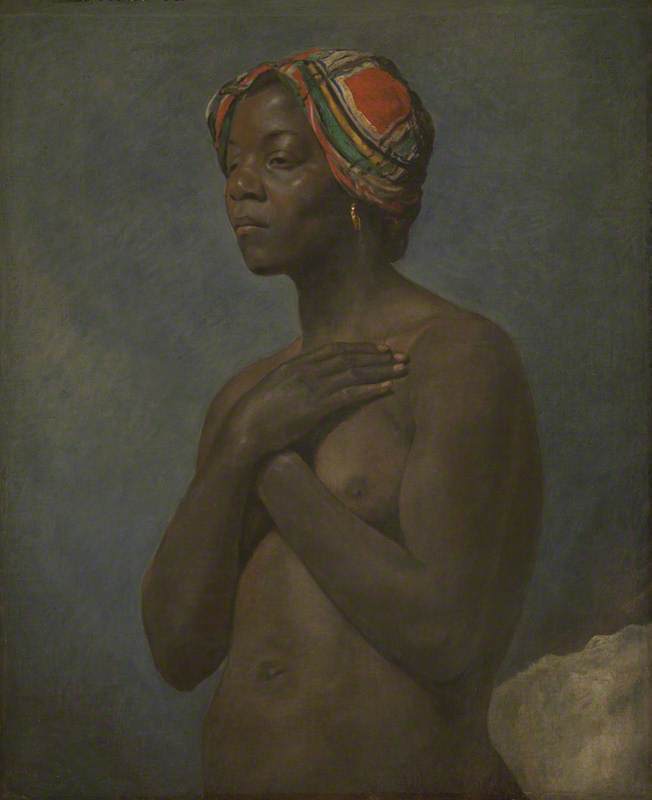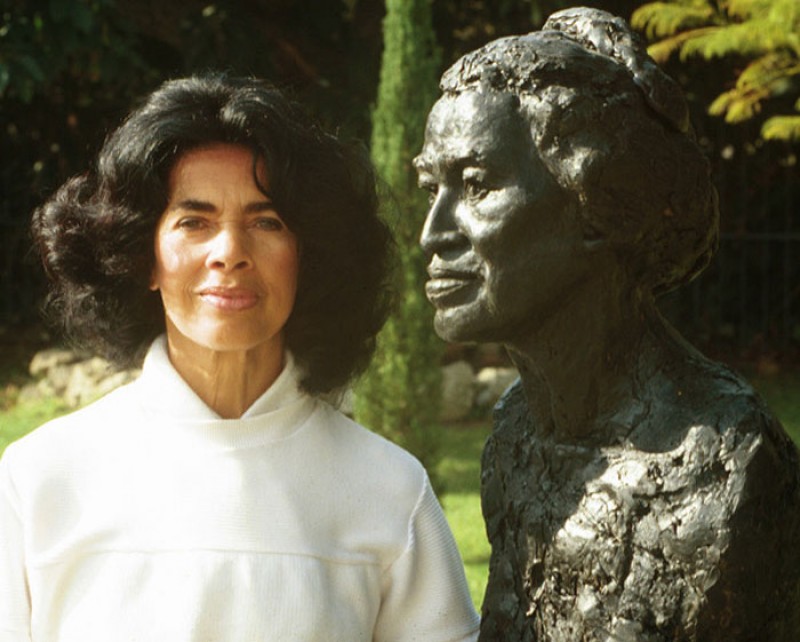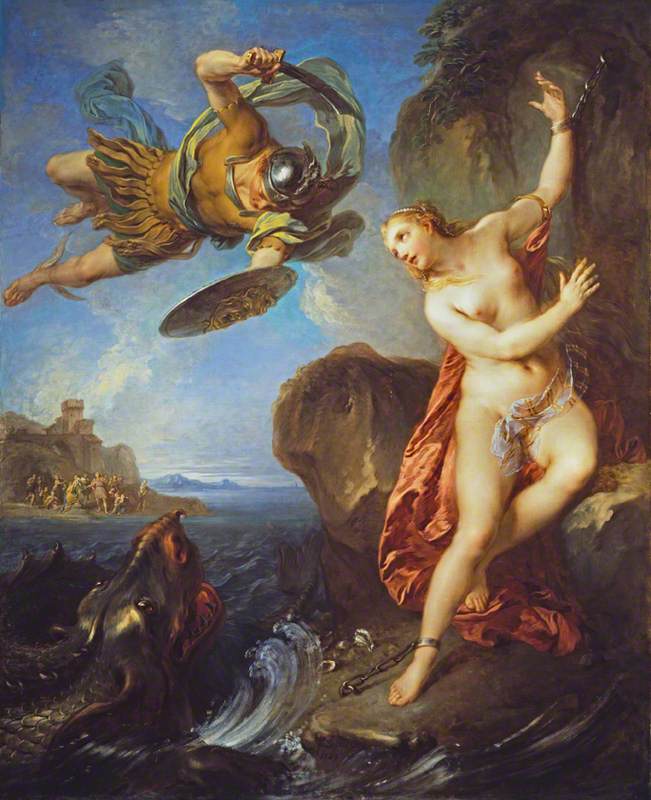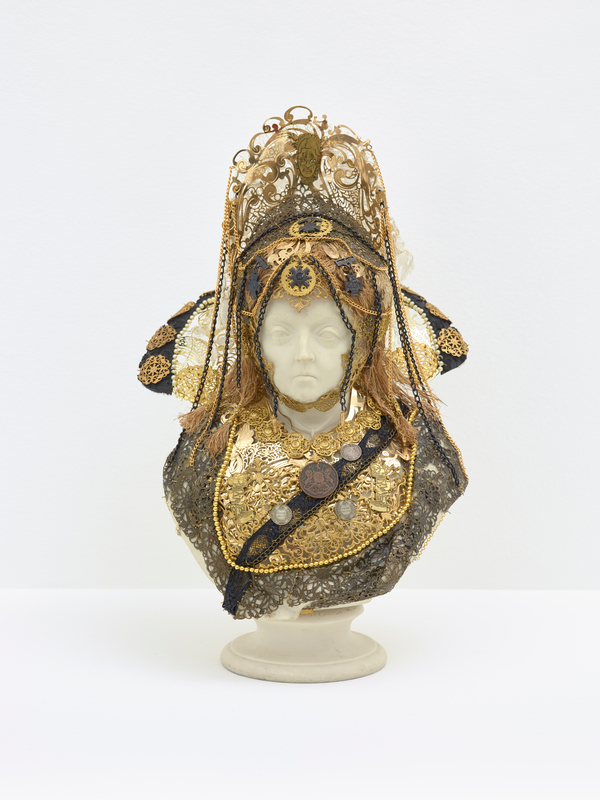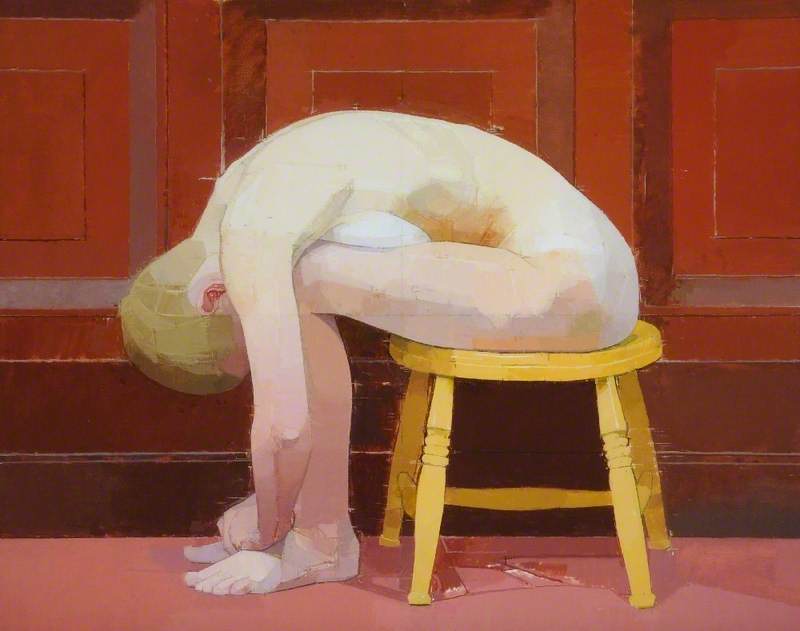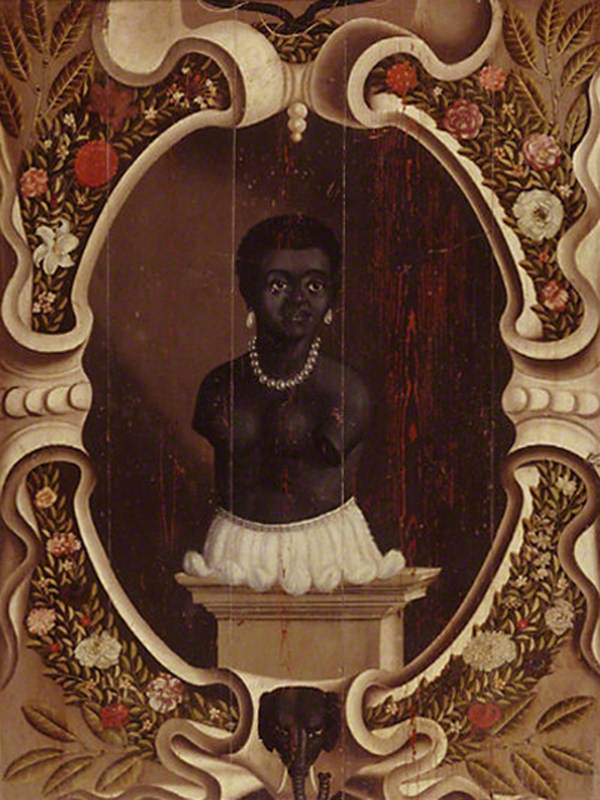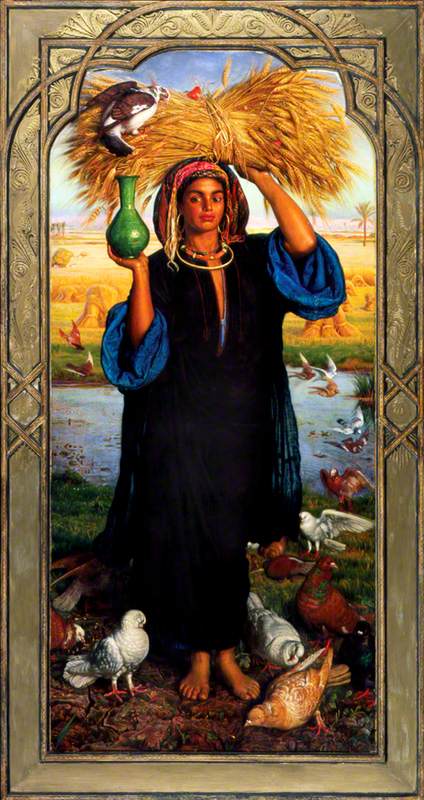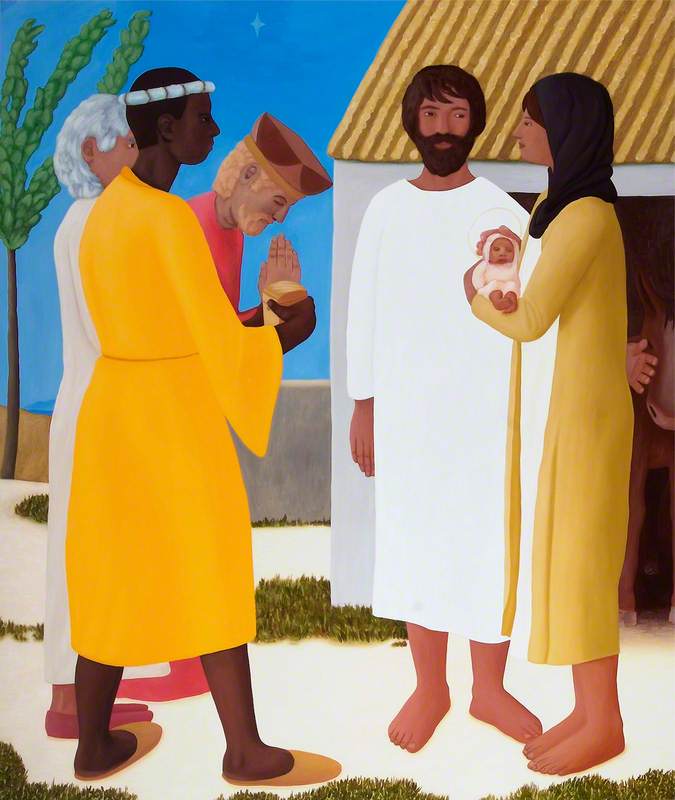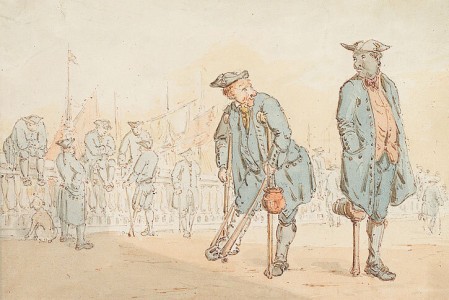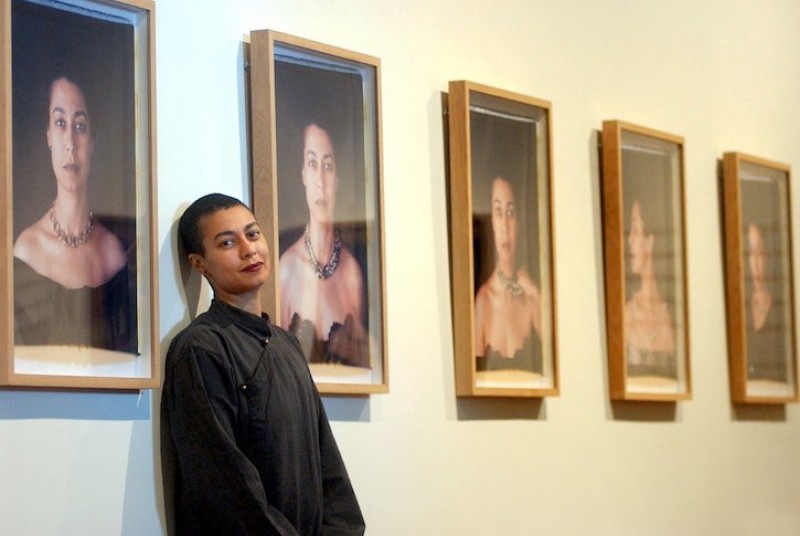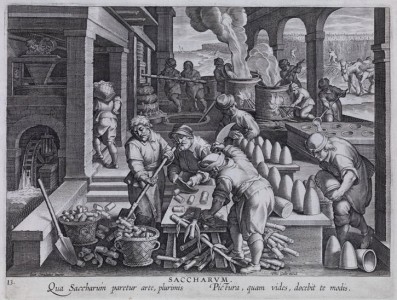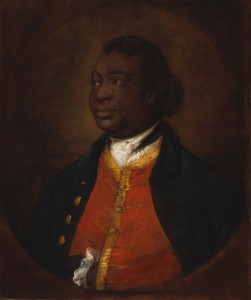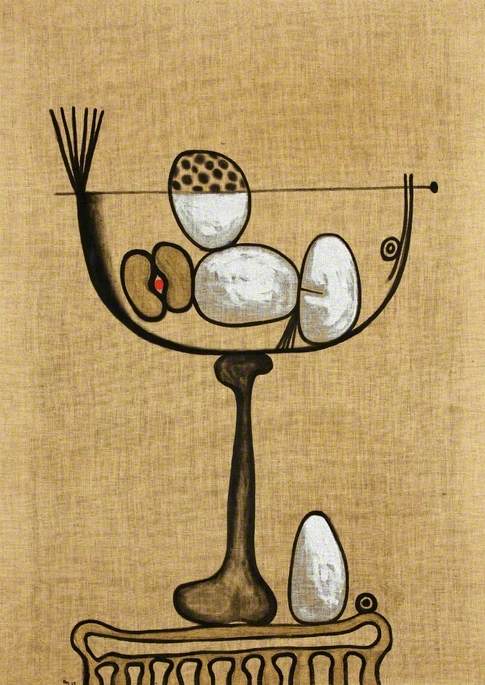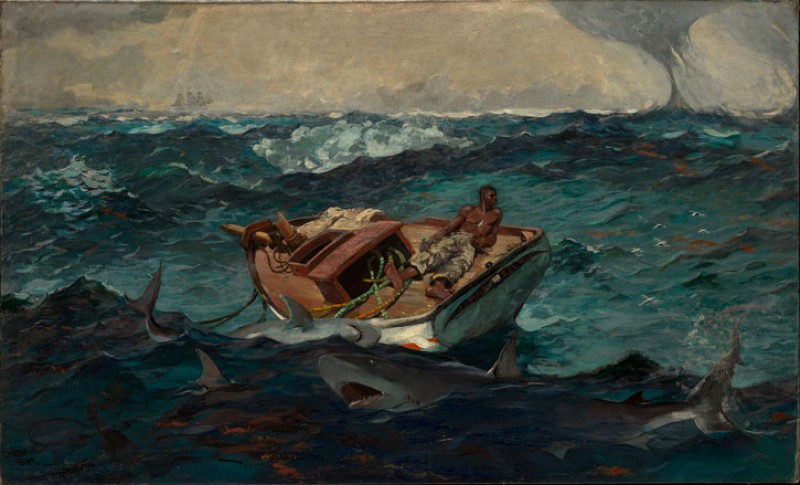The Pipe of Freedom was painted in 1869 by Thomas Stuart Smith, the artist and founder of the gallery in which it hangs today, The Stirling Smith Art Gallery & Museum, in central Scotland.
The painting celebrates the abolition of slavery in the US and depicts a formerly enslaved man as independent and free. The painting – considered radical at the time – is one of three portraits of black men by Smith, who painted them not as marginal figures but as the main subject occupying the centre of the canvas.
His subject is a man wrapped in a red Paisley shawl, standing against a wall while lighting his long-stemmed clay pipe. We don't have any information on the sitter other than that we believe he was living in London at the time, as this is where Smith was living and working in 1869. If you look closely at the brick wall behind him, we see that this is much more than a portrait, it is also a political statement. On the wall is a poster publicising the sale of slaves, but this poster has been covered by another, of Abraham Lincoln's Emancipation Proclamation, which declared on 1st January 1863: 'All persons held as slaves' within the rebellious states 'are, and henceforward shall be free.' The torn poster on the right alludes to 'St George – His Last Appearance', referring obliquely to the British influence on US emancipation.
Smith submitted his painting to the Royal Academy for its exhibition in 1869, but it was rejected, he claimed on political grounds. The painting was instead hung in a supplementary show alongside other works deemed unsuitable or too risqué by the Academy.
The artwork is well travelled – it has been loaned to exhibitions including 'Roots: the African Inheritance' in Scotland at Edinburgh's City Art Centre in 1997, as well as Manchester Art Gallery's 'Black Victorians' in 2005, and, last year, it caught the eye of British baritone Peter Brathwaite, who was taking part in the Getty Museum Challenge, a social media project that asked people recreate artworks using only household items.
Thomas S. Smith: The Pipe of Freedom (1869). A free man stands where a slave sale notice has been partially covered by an abolition notice. Reworked with incense from mum, granny’s quilt and family slavery records. Rediscovering #blackportraiture through #gettymuseumchallenge. pic.twitter.com/HKPoAtPVOz
— Peter Brathwaite (@PeterBrathwaite) May 21, 2020
Brathwaite used the challenge as an opportunity to create a whole series entitled Discovering Black Portraiture. His reimagining of The Pipe of Freedom was one of his most popular works in the series and featured on Radio 3's The Essay as part of Black History Month. Brathwaite commented that Smith may have chosen to depict his subject in a shawl so vividly red to symbolise the bloodshed of the American civil war. That's just speculation, but the colour certainly makes the painting stand out on a gallery wall.
Nicola Wilson, Collections Manager, The Stirling Smith Art Gallery & Museum
